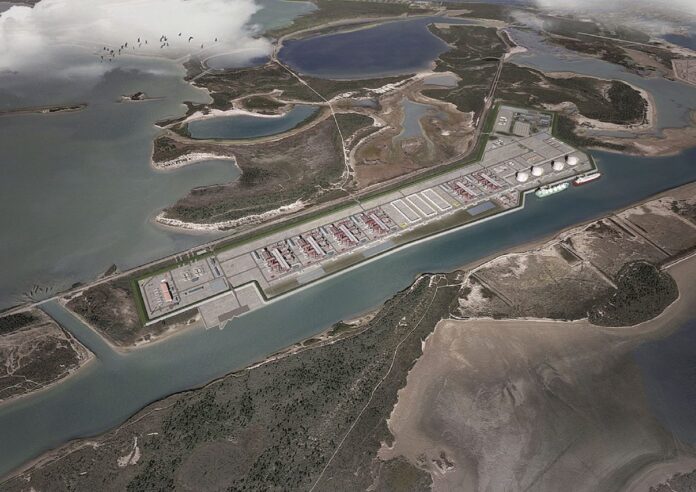Three companies that want to build liquefied natural gas export terminals cleared a major hurdle Thursday when they all received approval from the Federal Energy Regulatory Commission.
FERC approval brings the sites closer to reality, although the companies are still at various stages in the permitting process with other agencies including the U.S. Fish and Wildlife Service, Texas Commission on Environmental Quality and the U.S. Army Corps of Engineers.
The companies propose to receive the LNG through pipelines and trucks, then load it onto tanker ships for worldwide distribution. Together they represent nearly $40 billion investment at the South Texas port.
Final approval by all agencies isn’t assured and environmentalists and others opposed to the terminals have pledged to step up their fight against them. However, we note that most of the gas that moves through the local port would be shipped to fuel electrical plants worldwide, reducing the need to continue relying on coal- and oil-burning turbines that are greater polluters.
LNG is around 16% cheaper than coal, saving users money, and it burns up to 60% cleaner than coal. Even if the ultimate goal is total reliance on renewable energy sources, LNG offers a viable bridge that can be used until technology and cost make that goal feasible.
Locally, the terminals bring the promise of jobs. In addition to more than 1,000 total workers involved in the construction of the buildings and pipelines, together they promise to employ hundreds of permanent full-time workers, many, they say, earning salaries above $50,000.
Like other local residents, these workers will spend their earnings at stores, restaurants and entertainment venues across the Rio Grande Valley.
While the companies have negotiated abatements
with various taxing entities, at least one will be paying a set amount in lieu of the taxes, and the abatements will expire as time goes on, ultimately benefiting cities, counties, school districts and other entities that rely on property tax revenue.
Although the companies are still working toward the final OK, FERC approval should inspire local officials to begin planning for the now-greater possibility of their construction.
That begins with reviewing infrastructure that will support the delivery of LNG to the terminals. What, if any, will be the procedure and schedule for inspecting pipelines to ensure they are properly maintained and don’t leak? Do they need to budget for the equipment that might be needed to handle the minute chance of a gas-fed leak or fire?
Port officials and Valley lawmakers also should review existing maritime laws to see which ones might be outdated and hinder LNG operations. One that has drawn particular attention is the Merchant Marine Act of 1920, known as the Jones Act, which regulates the use of vessels operating under foreign flags between U.S. ports. The act prevents a foreign-owned tanker to make a delivery to Puerto Rico, for example, on its way to a final European destination.
As the LNG companies continue though the permitting process, we urge Valley interests to begin working to make their final move to the Valley as seamless as possible.
Valley Morning Star





